Francesca and Henk-Jan's Backpacking Trip!
Monday, July 19, 2010
No More Confusion About Confucianism
On the 19th Francesca and I had planned to visit the hometown of one of the most famous Chinese people of all time. Unfortunately it wouldn’t be that easy to get to his place. We took a taxi to the bus station that morning and bought tickets to go to the town of Qufu. Since the bus didn’t leave right away and Francesca was hungry we popped into a KFC for a quick meal. By the time we were done the bus was about to leave (in fact, we almost missed it!) and we quickly found our seats. The 2-hour drive was not particularly exciting. We arrived at the bus station around 11:30 AM and bought some water and ice cream to keep going. Yes, we still hadn’t arrived in Qufu! A short taxi ride later we did finally make it to Qufu’s tourist information center. I got us tickets and haggled for a long time with the only English speaking guide to make his services affordable. Foreigners are always charged extra, but in the end we agreed on paying the price for locals!
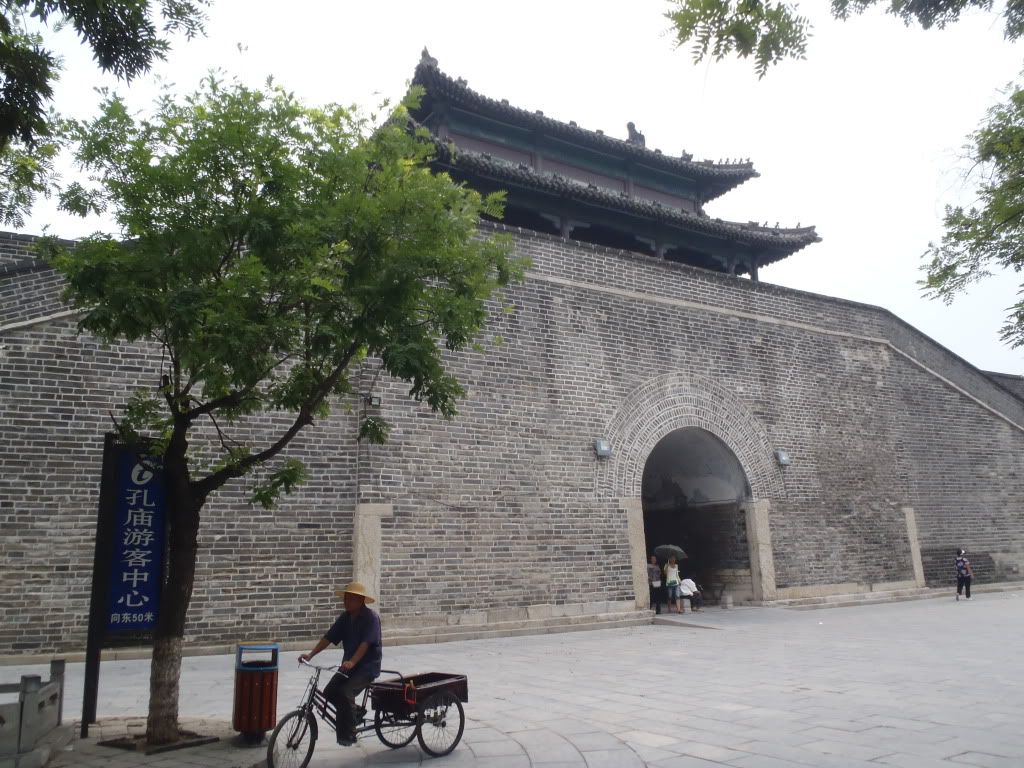
Our guide led us to the first site of the day. It is here I will reveal the name of the famous Chinese person we had come to pay a visit. Qufu is the birthplace of Master Kong, much better known in the West under his Latin name Confucius. The little walled town is home to the Kong Family Mansion, the Temple of Confucius and the Cemetery of Confucius.
Let me first tell you about Confucius. Confucius (Kongfuzi, or ‘Master Kong’) was born in 551 B.C. and started his life rather miserably. His parents thought he was ugly and worthless, and actually tried to get rid of him. However, when little Confucius was returned to his doorsteps by a tiger his parents knew there was something special about him and raised him. Poverty did not escape his family throughout his youth and Confucius later led a boring and unfulfilled life as an adult, working for the government. However, at the age of 50 (little late for a mid-life crisis, but still) he decided enough was enough and quit his job. He had great ideas about revolutionizing thinking in China and wanted to ‘sell’ them. He started traveling from state to state hoping to find a ruler that would put his ideas into practice. Unfortunately, after 13 years on the road, poor Confucius still hadn’t found the benefactor he was hoping for and returned home. He returned to Qufu to become a private teacher and wrote the six Confucian classics. Furthermore, his teachings and sayings were collected by his students in the Analects.
Francesca wanted me to include some of his quotes, so here are some of our favorites:
“Before you embark on a journey of revenge, dig two graves.”
“Ignorance is the night of the mind, but a night without moon and star.”
“Men's natures are alike; it is their habits that carry them far apart.”
“The people may be made to follow a path of action, but they may not be made to understand it.”
“To be able under all circumstances to practice five things constitutes perfect virtue; these five things are gravity, generosity of soul, sincerity, earnestness and kindness.”
“The superior man, when resting in safety, does not forget that danger may come. When in a state of security he does not forget the possibility of ruin. When all is orderly, he does not forget that disorder may come. Thus his person is not endangered, and his States and all their clans are preserved.”
Confucianism is a humanist philosophy that strives for social harmony and the common good. Confucianism changed considerably over time, but always held on to the principle ideas. It has an emphasis on give basic hierarchical relationships: father - son, ruler - subject, husband - wife, elder brother - younger brother, and friend - friend. Confucius believed that if each of the former took good care of the latter and the latter would respect the former society would become harmonious. Obviously, his teachings were picked up on by later emperors who used his philosophy to control their people. It’s no wonder Confucianism has held so much sway in Chinese society for the past 2000 years!
Our guide started with a little introduction about the Temple of Confucius. Read wiki’s description of its history here: “[The Temple] was established in 478 BC, one year after Confucius's death, at the order of the Duke Ai of the State of Lu, who commanded that the Confucian residence should be used to worship and offer sacrifice to Confucius. The temple was expanded repeatedly over a period of more than 2,000 years until it became the huge complex currently standing.”
Our guide led us through some of the triple-door gates, leading to some cypress-filled courtyards. About halfway through we entered the Great Pavilion of the Constellation of Scholars, an imposing wooden building from the Jin-dynasty containing prints illustrating some of Confucius’s deeds as mentioned in the Analects. We passed through some more gates until we reached some stele pavilions, erected in Confucius and his scholars’ honor throughout the years by different emperors. On our way to the largest building in the complex we passed by Xingtan Pavilion, where Confucius allegedly taught his students.
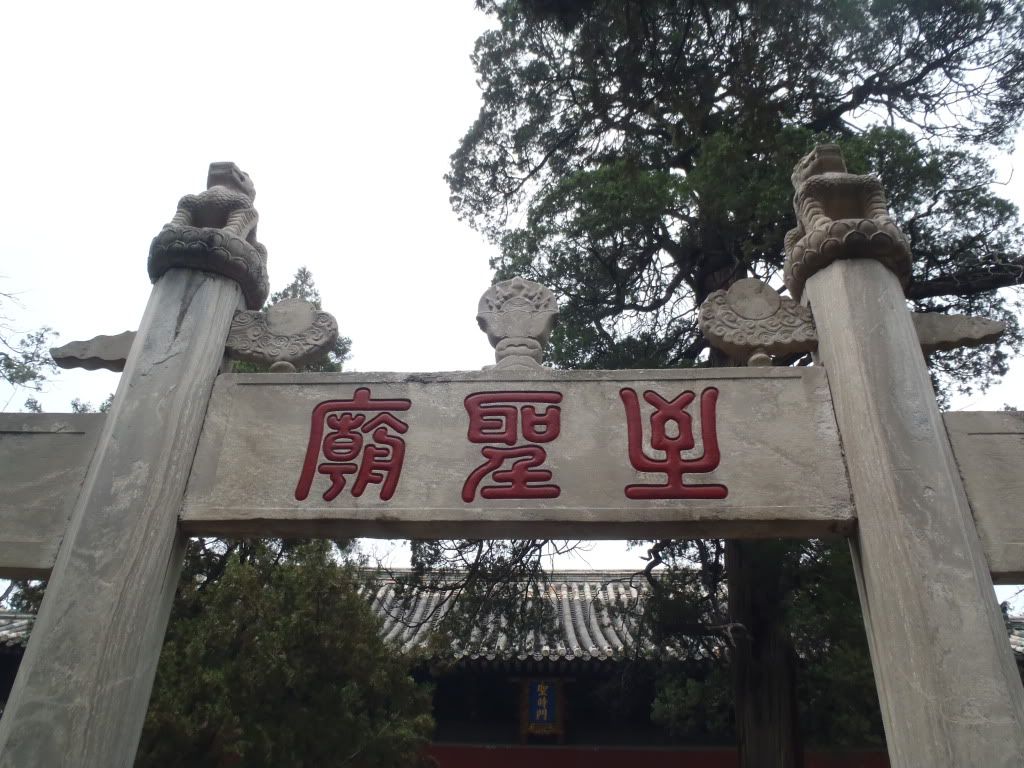
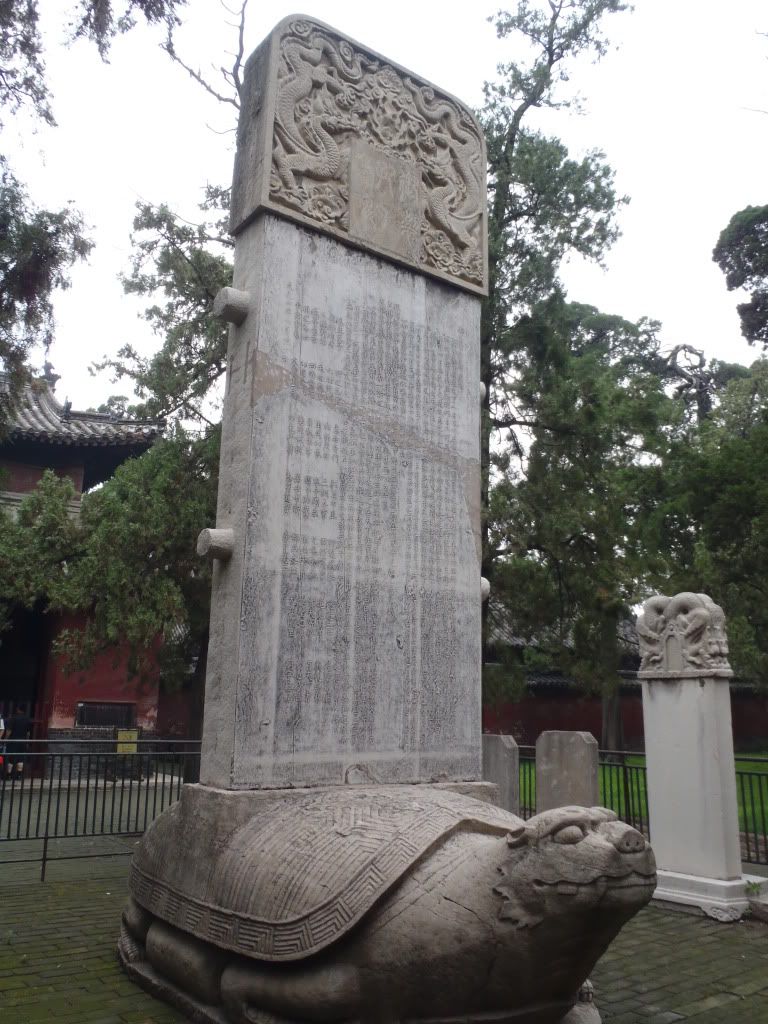
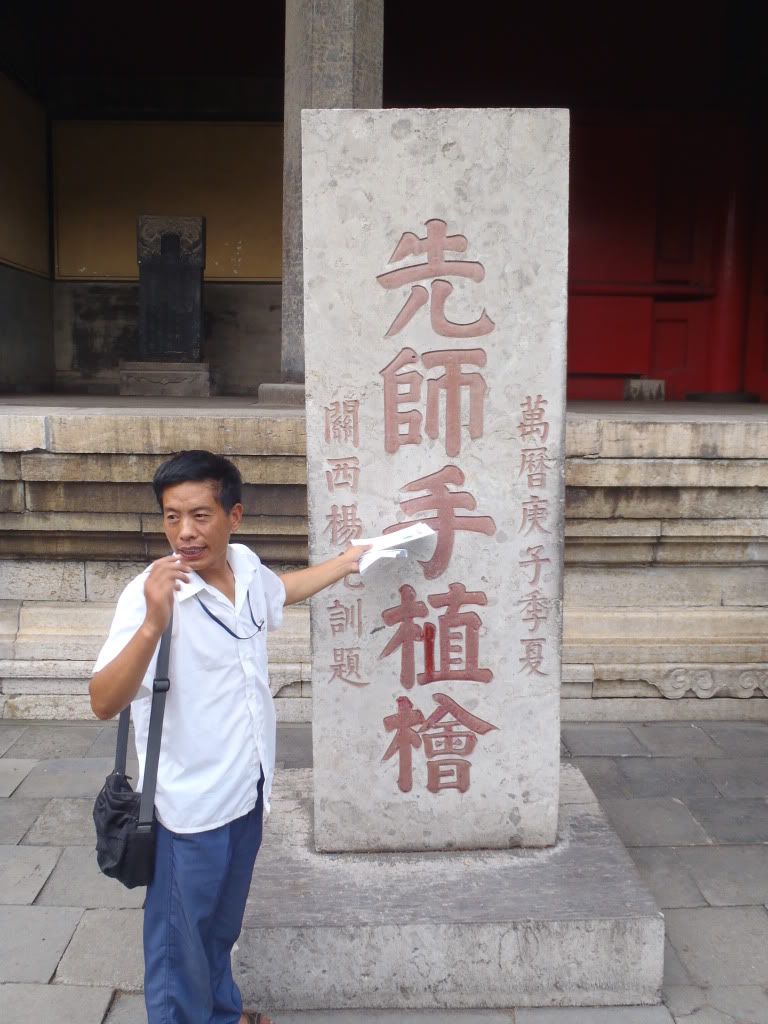
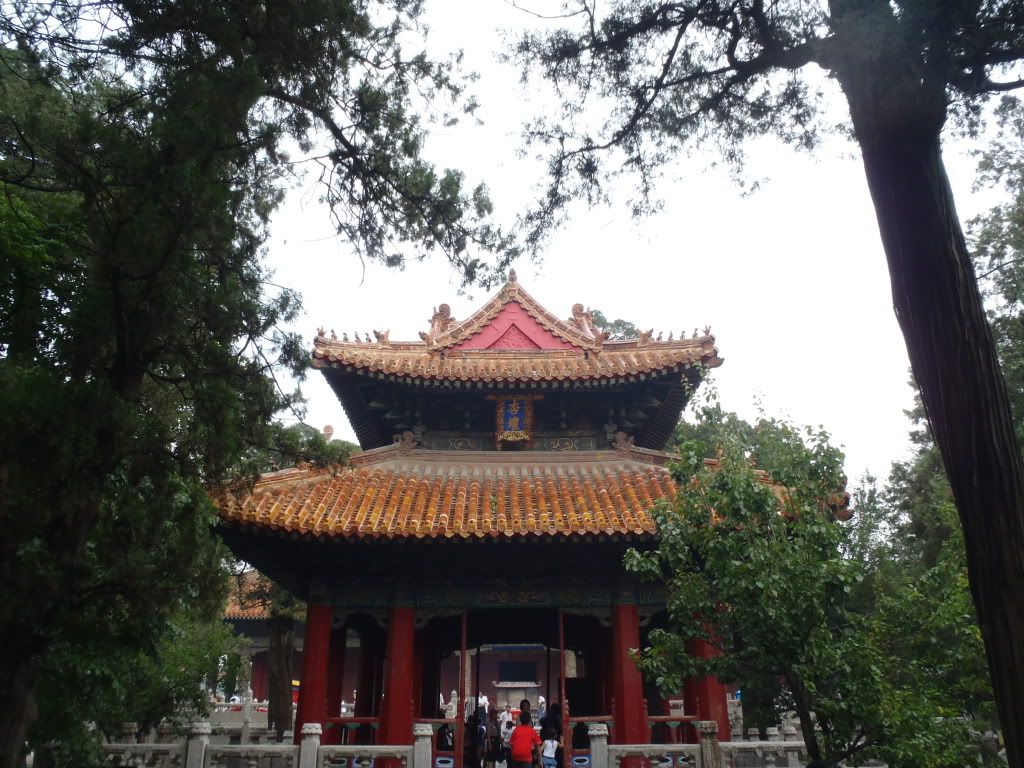
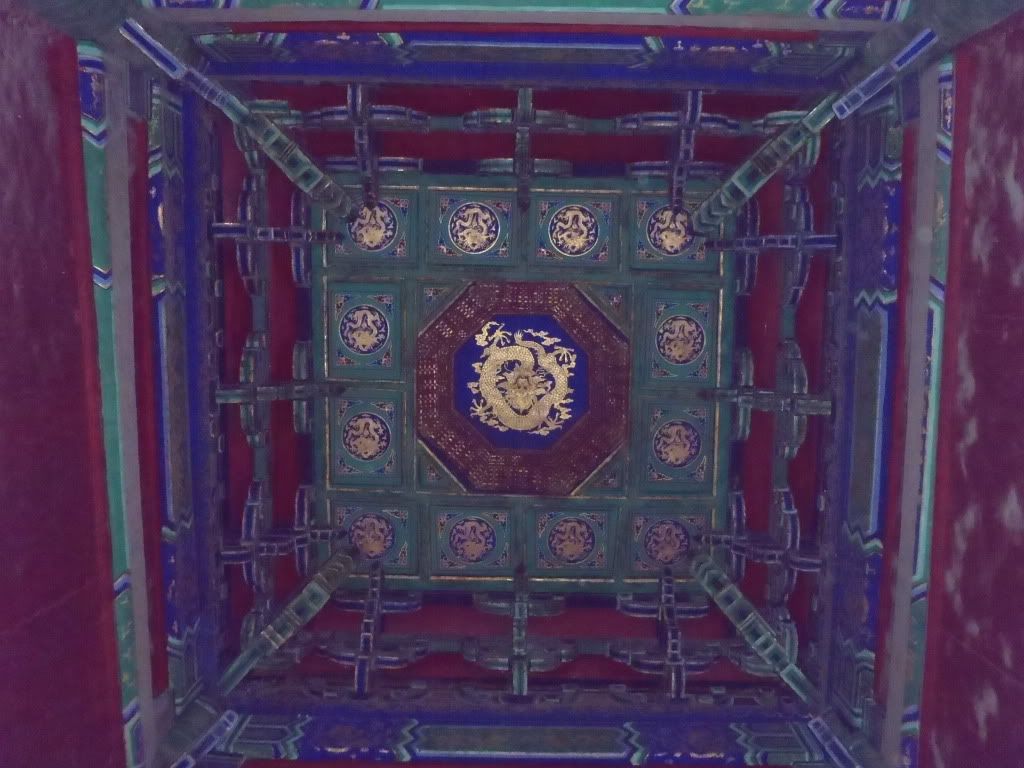
Much more impressive was the Dacheng Hall, which dates from 1724 and is 31 meters high. Francesca and I were both especially impressed by the carved columns. Legend has it that the Kong Family actually had to have the dragon-coiled columns covered when Emperor Qianlong visited from Beijing, in case he felt the Kongs had a more impressive building than his Forbidden City. We had a look inside the rather dark structure and spotted a huge statue of Confucius. Much more interesting was the dance group that had found a spot just outside the temple though; Francesca and I were mesmerized by their funky moves to the wildest selection of songs you can possibly imagine.
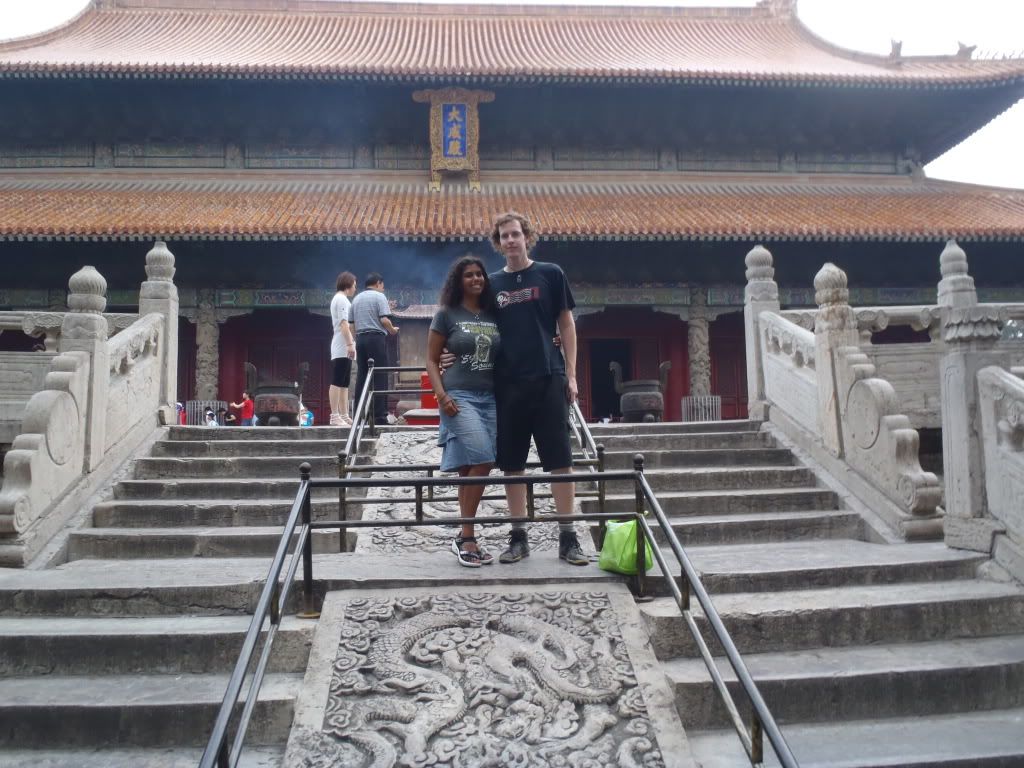
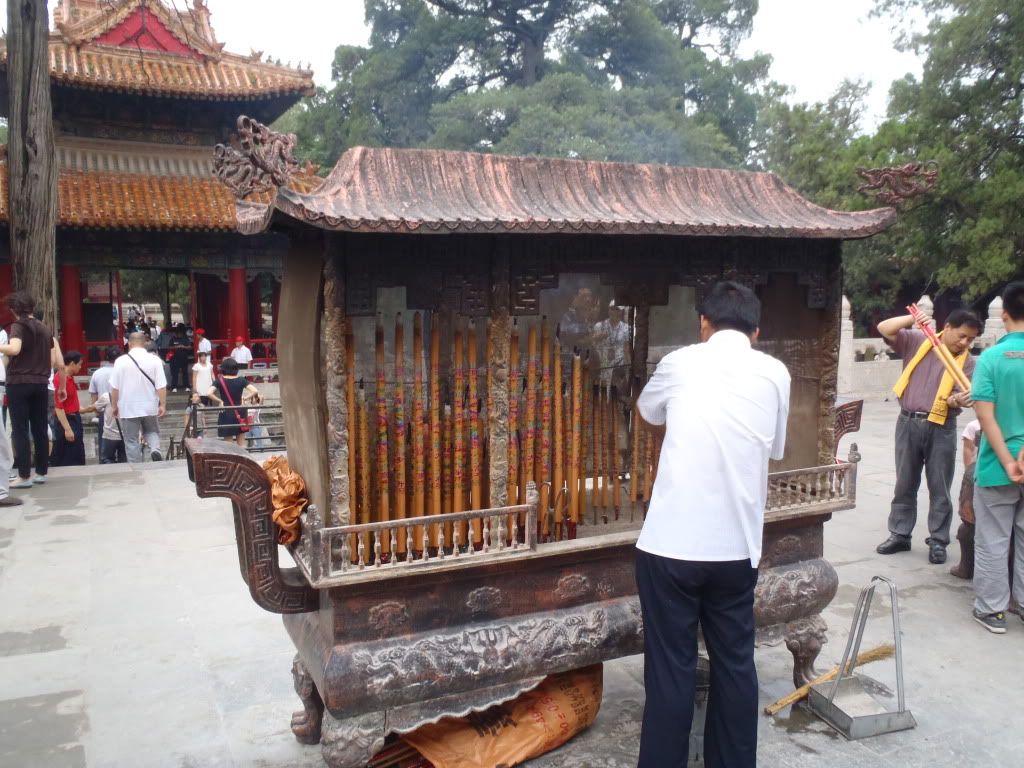
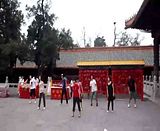
After the Confucius Temple we walked through town on our way to the Confucius Mansion. We passed under the Bell Tower and entered around 2:30 PM. The Confucius Mansion holds an impressive 450 halls, rooms and buildings originally dating from the 16th Century. As Wiki explains: “The direct descendants of Confucius lived in the Kong family mansion. They were in charge of tending to the temple and cemetery. The family mansion was inhabited by descendants of Confucius until 1937, when Confucius' descendant in the 76th and 77th generations fled to Chongqing during the Second Sino-Japanese War and later during the Chinese Civil War to Taiwan, where the head of the family still resides.” Sadly, the Mansion was taken by the Chinese Government, so there’s no chance any Kongs will ever return. And what’s worse, all the revenue from the (overpriced) tickets goes straight to Beijing.
But all of that didn’t concern the earlier generations of Kongs. Being descendants of the great Teacher they were ennobled and granted privileges by the emperors. The Kongs were in full control of Qufu and were even allowed to collect taxes and set laws. Because of the royal protection most of the furniture, ceramics, artifacts and records survived, leaving a great legacy.
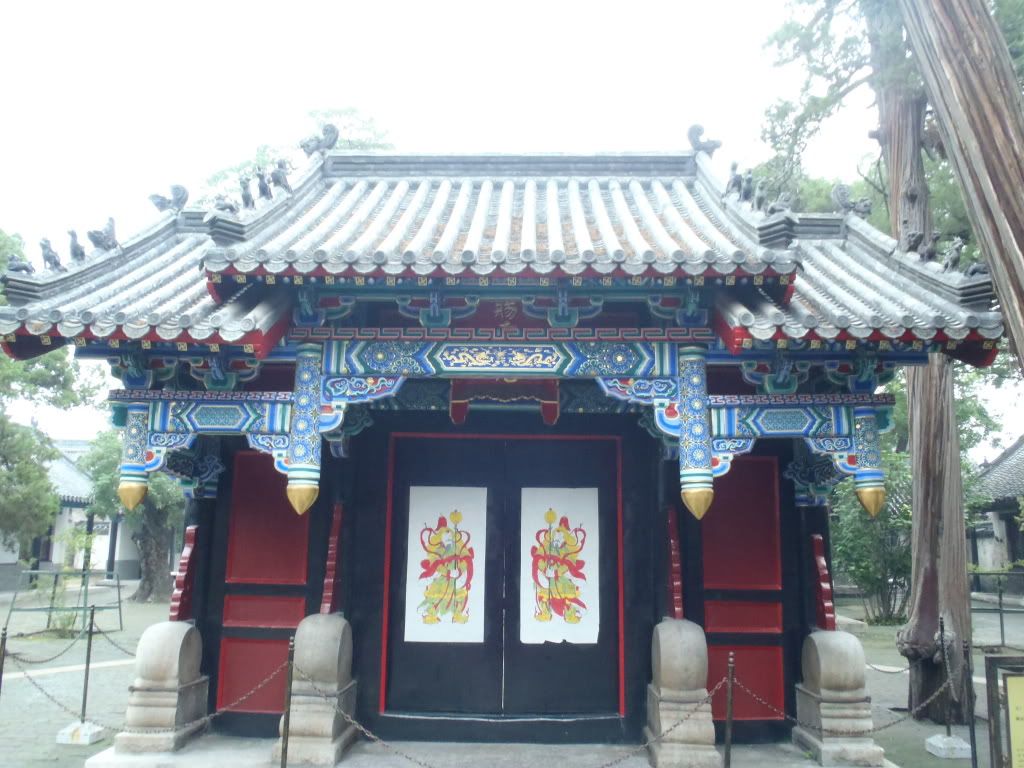
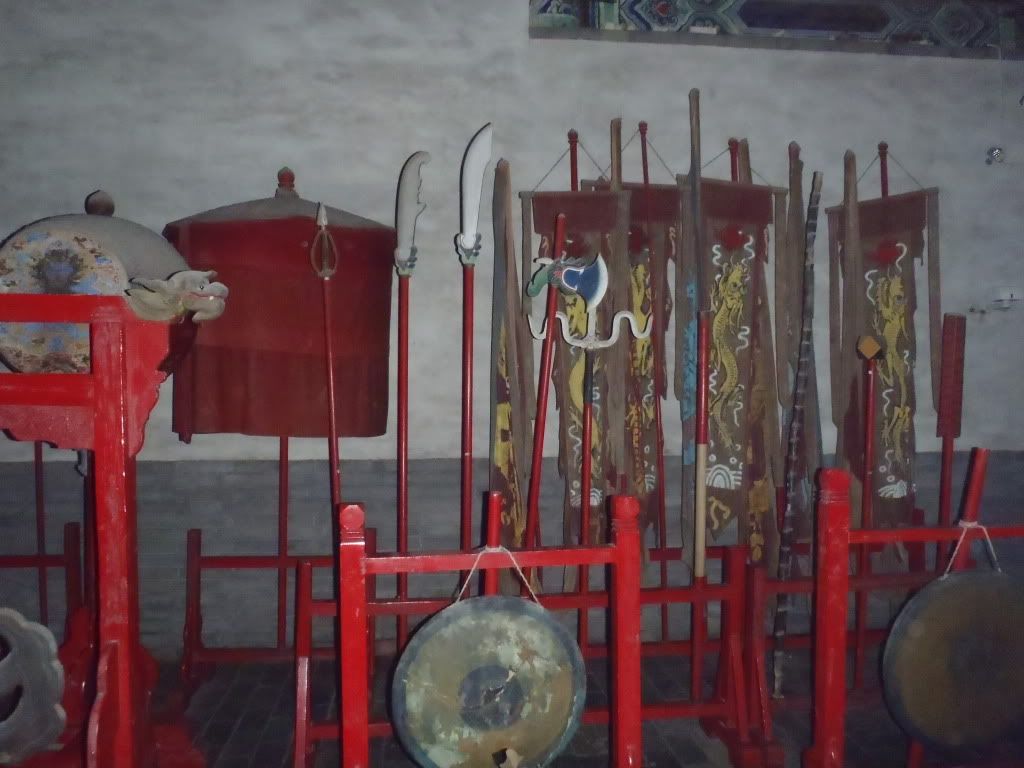
As the weather in China is as unpredictable as back home we suddenly found ourselves in the middle of a torrential downpour. We managed to check out the Front Chamber, where the duke lived. We also spotted the tower of refuge, where the Kongs gathered if the locals were a little less pleased with them. Sadly, the rain prevented us from really enjoying all the sights and we had to duck, hide and run for cover (even with our ponchos on) to avoid getting too wet for comfort.
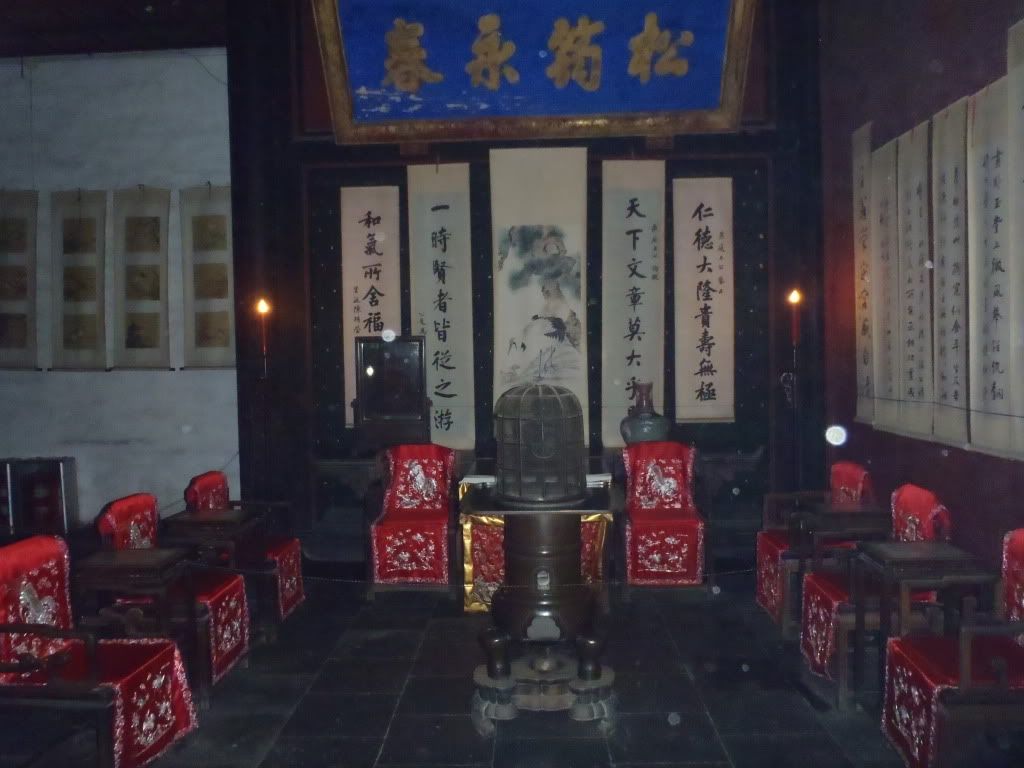
When we reached the garden, at the rear of the complex, the weather gods thought it’d be funny to turn the showers off and the sky turned a little blue again. The garden was actually pretty cool, with a Cypress tree embraced by a Chinese Scholar tree being the highlight. We exited the garden to make our way to the Confucius Cemetery, the final site on our tour of Qufu.
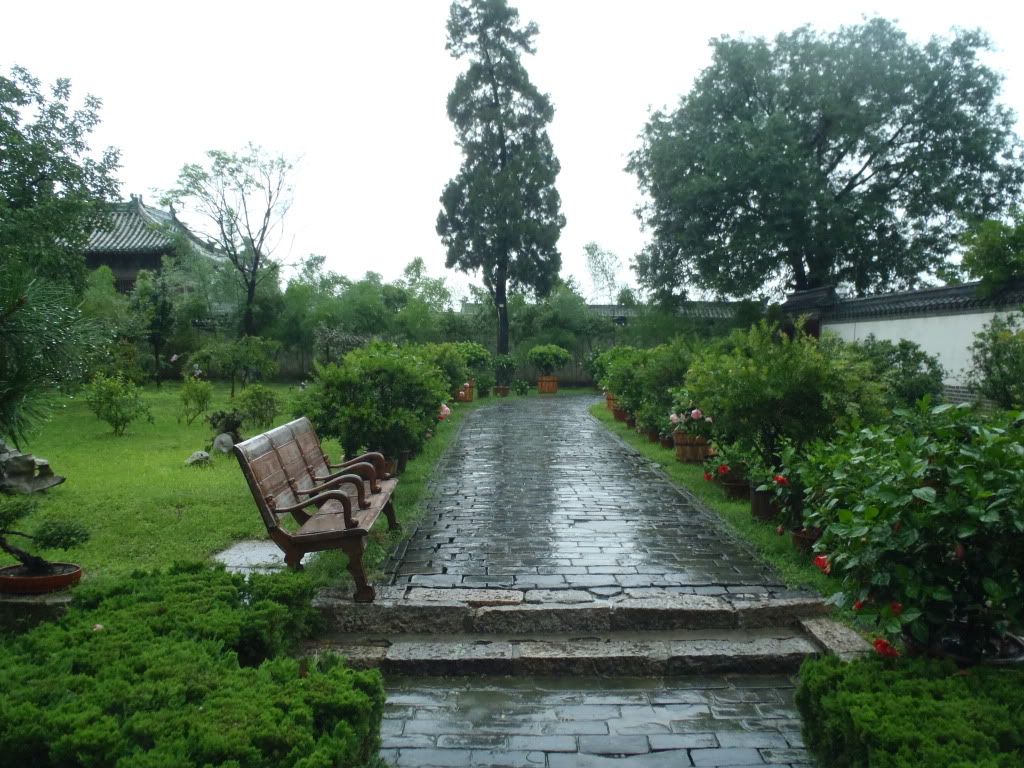
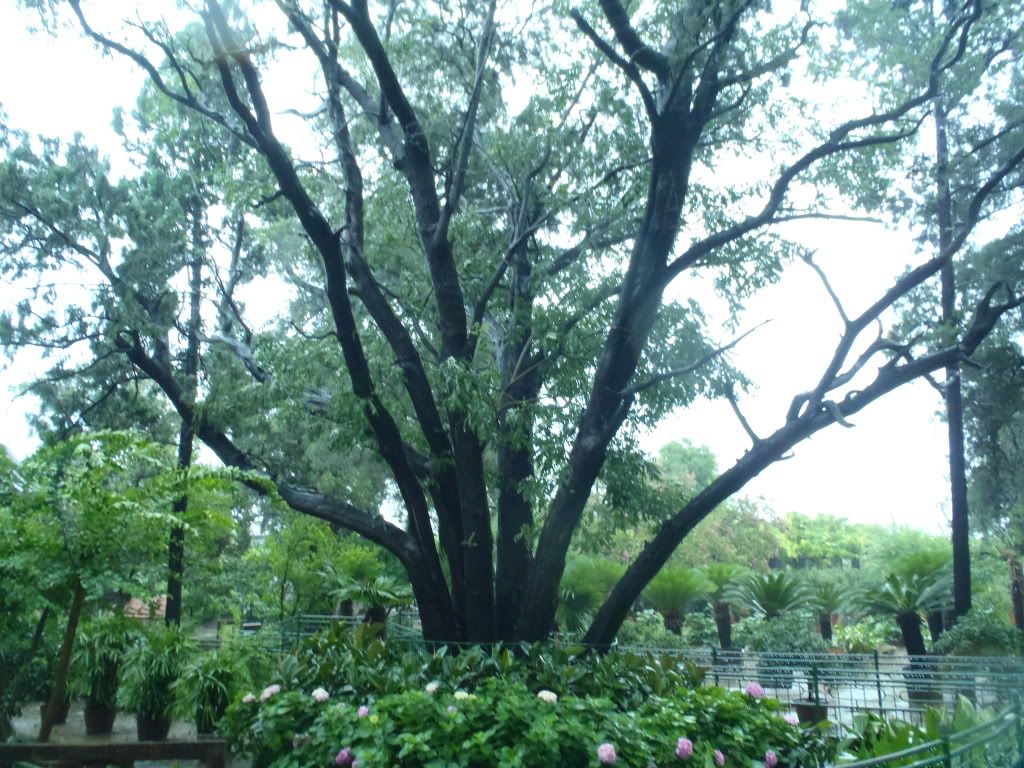
It turned out that the streets of Qufu were ill-designed to handle with the water. They had completely flooded and made for an interesting spectacle. People were trying to dodge the water, but found themselves soaking wet after a passing car splashed them anyway. Francesca cared about none of this and jumped straight in the water for some awesome pictures. Just look how far her legs disappear into the water! I tried to keep my shoes (somewhat) dry, but had to soak them when we crossed the street to get a pedi-cab to take us to the Cemetery.
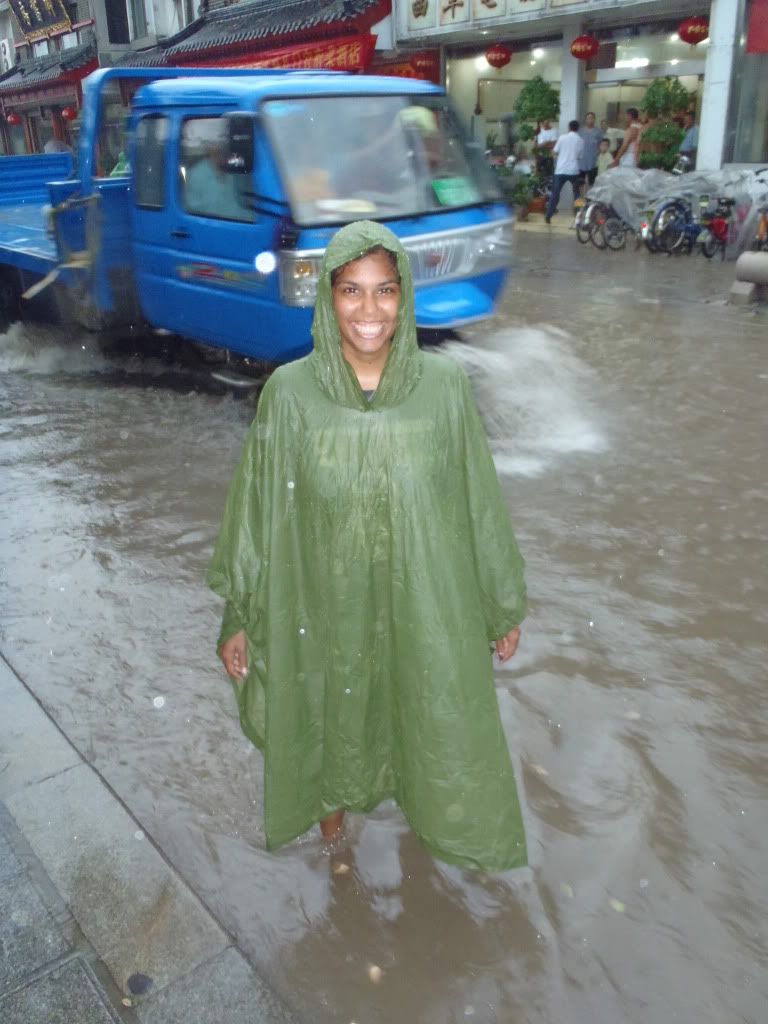
The Cemetery is actually also known as the Confucius Forest – it didn’t take long for us to find out why. We walked past some old, dying trees to the main entrance and entered a forest. It took a while before we actually spotted the first grave stones, hidden behind trees and in long grass. The many Kongs that are buried here (and are still being buried here) have been spread out over the entire forest! Today, still 3600 stones stand.
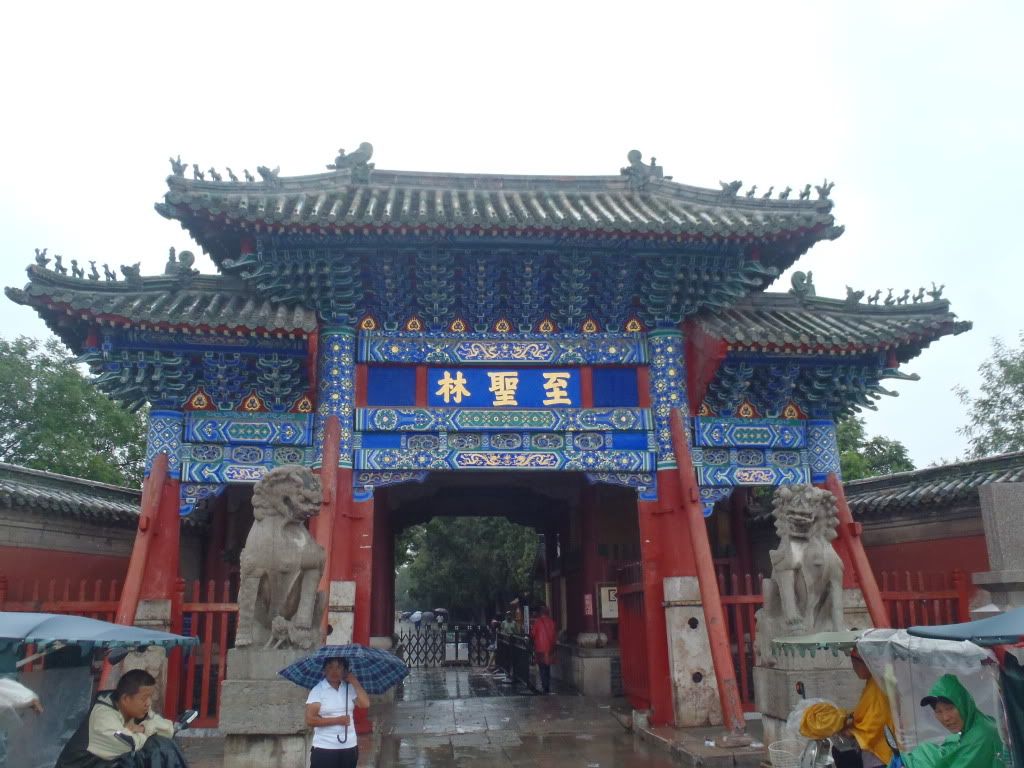
The main passage way, the one to Confucius’ Tomb, is lined by a pair of stone panthers, griffins and enormous statues. I half-expected Confucius’ Tomb to be a huge structure, but it turned there was only a very simple grass mound enclosed by a low wall. We also learned from our guide that his sons are buried nearby. Cooler was the story about Zi Gong, a student of Confucius who had been so devoted to his teacher that he spent the 6 years following his Master’s death in a hut near the tomb. The other disciples ‘only’ stayed for 3 years…
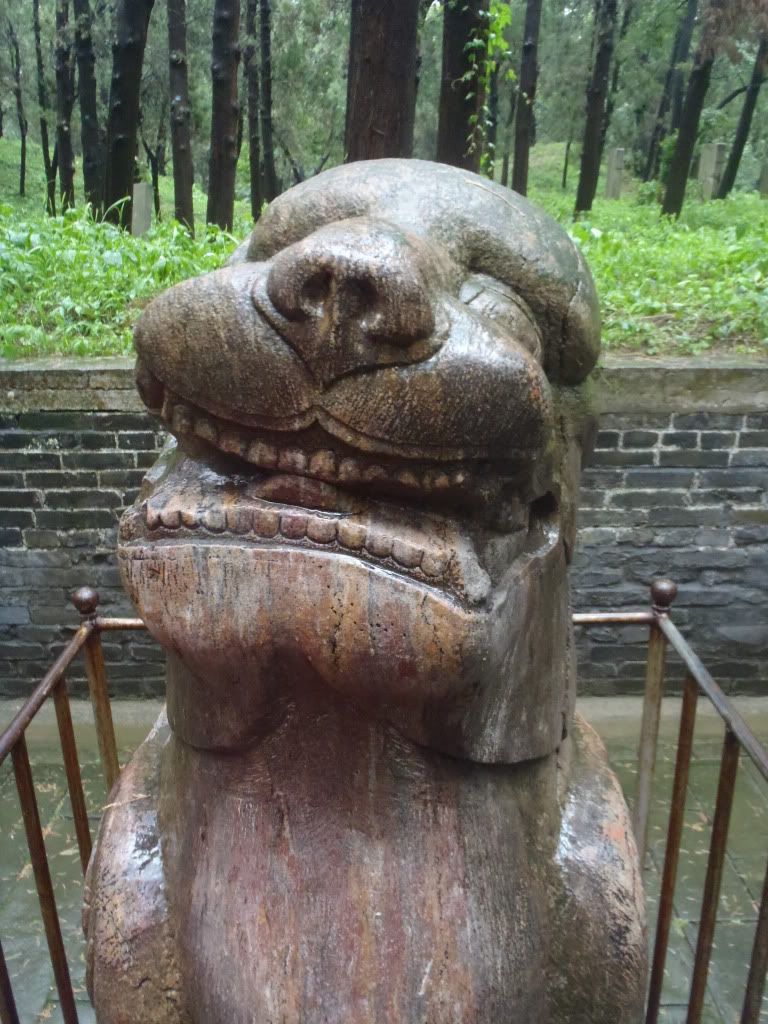
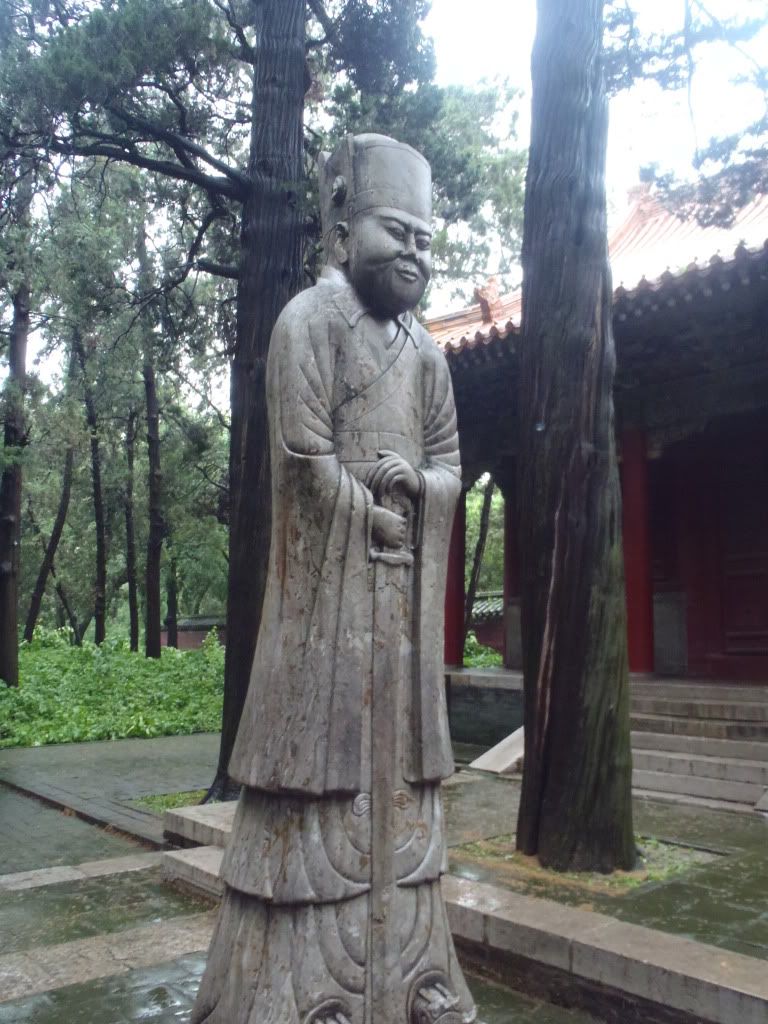
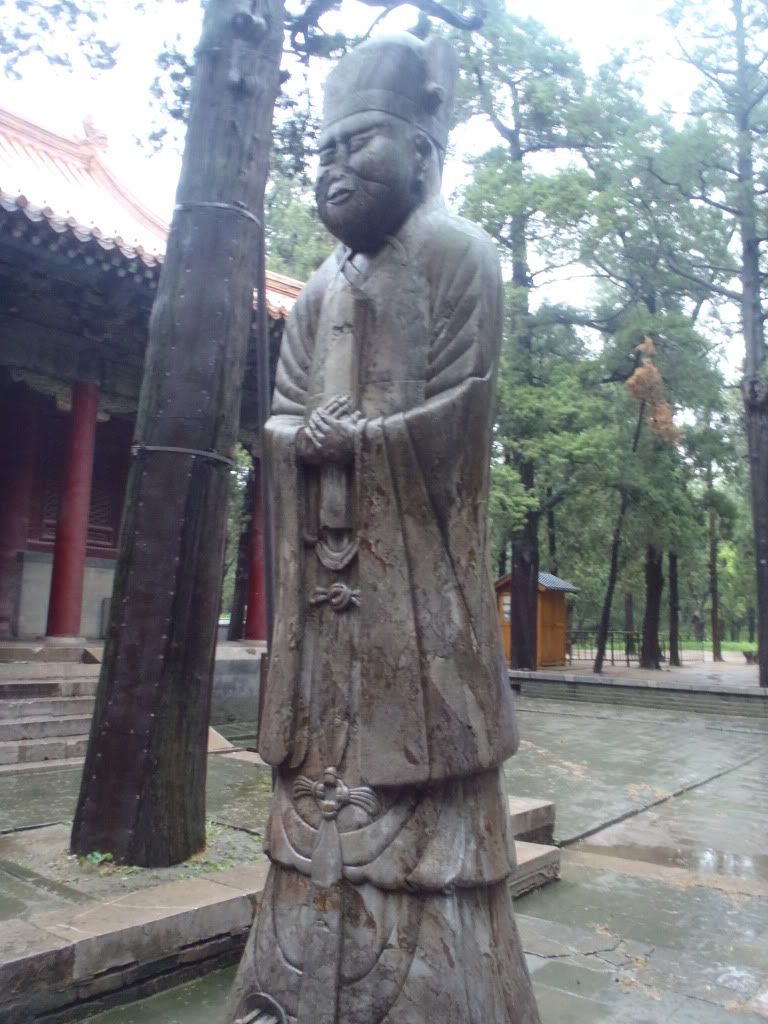
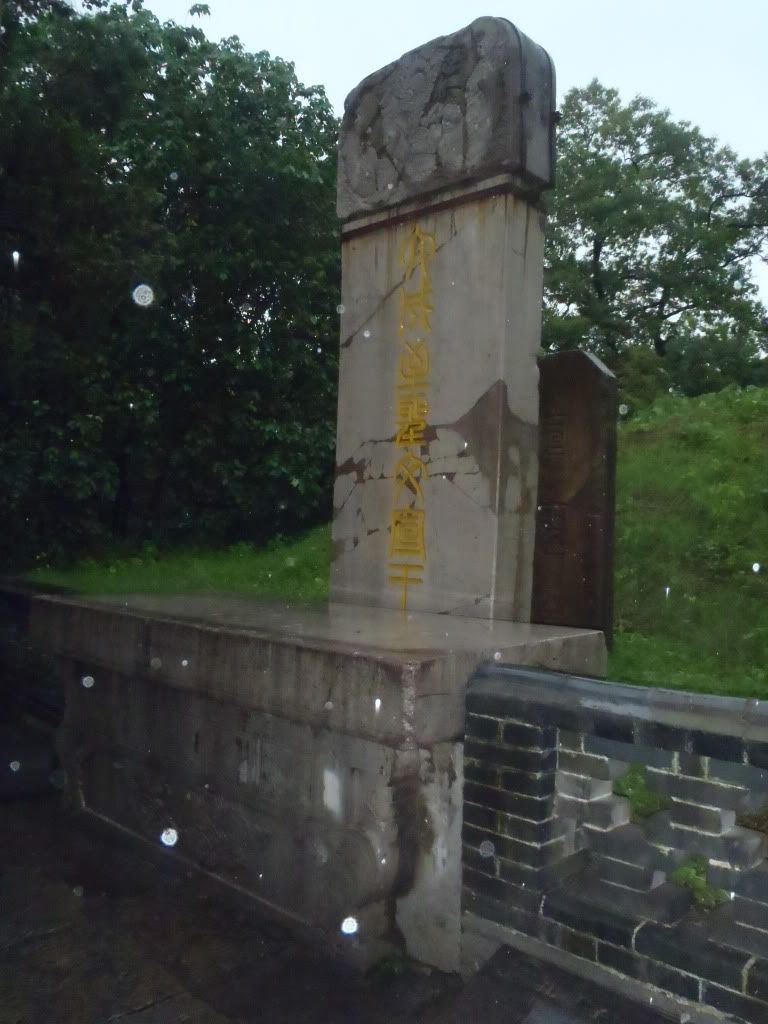
We returned to our pedi-cab-man after this and managed to get a taxi a little later. The driver tried to rip us off at first, asking for way too much money for a short cab-ride. In the end we grabbed another taxi and paid the meter-price to the bus station. We managed to get a bus fairly soon after our return and bought some buns and chicken-sticks to hold us over on the way back. Around 8:30 PM Francesca and I reached Jinan once more. I bought a lovely (and huge) watermelon, which constituted my dessert (and breakfast the next morning!) before heading to bed.

Our guide led us to the first site of the day. It is here I will reveal the name of the famous Chinese person we had come to pay a visit. Qufu is the birthplace of Master Kong, much better known in the West under his Latin name Confucius. The little walled town is home to the Kong Family Mansion, the Temple of Confucius and the Cemetery of Confucius.
Let me first tell you about Confucius. Confucius (Kongfuzi, or ‘Master Kong’) was born in 551 B.C. and started his life rather miserably. His parents thought he was ugly and worthless, and actually tried to get rid of him. However, when little Confucius was returned to his doorsteps by a tiger his parents knew there was something special about him and raised him. Poverty did not escape his family throughout his youth and Confucius later led a boring and unfulfilled life as an adult, working for the government. However, at the age of 50 (little late for a mid-life crisis, but still) he decided enough was enough and quit his job. He had great ideas about revolutionizing thinking in China and wanted to ‘sell’ them. He started traveling from state to state hoping to find a ruler that would put his ideas into practice. Unfortunately, after 13 years on the road, poor Confucius still hadn’t found the benefactor he was hoping for and returned home. He returned to Qufu to become a private teacher and wrote the six Confucian classics. Furthermore, his teachings and sayings were collected by his students in the Analects.
Francesca wanted me to include some of his quotes, so here are some of our favorites:
“Before you embark on a journey of revenge, dig two graves.”
“Ignorance is the night of the mind, but a night without moon and star.”
“Men's natures are alike; it is their habits that carry them far apart.”
“The people may be made to follow a path of action, but they may not be made to understand it.”
“To be able under all circumstances to practice five things constitutes perfect virtue; these five things are gravity, generosity of soul, sincerity, earnestness and kindness.”
“The superior man, when resting in safety, does not forget that danger may come. When in a state of security he does not forget the possibility of ruin. When all is orderly, he does not forget that disorder may come. Thus his person is not endangered, and his States and all their clans are preserved.”
Confucianism is a humanist philosophy that strives for social harmony and the common good. Confucianism changed considerably over time, but always held on to the principle ideas. It has an emphasis on give basic hierarchical relationships: father - son, ruler - subject, husband - wife, elder brother - younger brother, and friend - friend. Confucius believed that if each of the former took good care of the latter and the latter would respect the former society would become harmonious. Obviously, his teachings were picked up on by later emperors who used his philosophy to control their people. It’s no wonder Confucianism has held so much sway in Chinese society for the past 2000 years!
Our guide started with a little introduction about the Temple of Confucius. Read wiki’s description of its history here: “[The Temple] was established in 478 BC, one year after Confucius's death, at the order of the Duke Ai of the State of Lu, who commanded that the Confucian residence should be used to worship and offer sacrifice to Confucius. The temple was expanded repeatedly over a period of more than 2,000 years until it became the huge complex currently standing.”
Our guide led us through some of the triple-door gates, leading to some cypress-filled courtyards. About halfway through we entered the Great Pavilion of the Constellation of Scholars, an imposing wooden building from the Jin-dynasty containing prints illustrating some of Confucius’s deeds as mentioned in the Analects. We passed through some more gates until we reached some stele pavilions, erected in Confucius and his scholars’ honor throughout the years by different emperors. On our way to the largest building in the complex we passed by Xingtan Pavilion, where Confucius allegedly taught his students.





Much more impressive was the Dacheng Hall, which dates from 1724 and is 31 meters high. Francesca and I were both especially impressed by the carved columns. Legend has it that the Kong Family actually had to have the dragon-coiled columns covered when Emperor Qianlong visited from Beijing, in case he felt the Kongs had a more impressive building than his Forbidden City. We had a look inside the rather dark structure and spotted a huge statue of Confucius. Much more interesting was the dance group that had found a spot just outside the temple though; Francesca and I were mesmerized by their funky moves to the wildest selection of songs you can possibly imagine.



After the Confucius Temple we walked through town on our way to the Confucius Mansion. We passed under the Bell Tower and entered around 2:30 PM. The Confucius Mansion holds an impressive 450 halls, rooms and buildings originally dating from the 16th Century. As Wiki explains: “The direct descendants of Confucius lived in the Kong family mansion. They were in charge of tending to the temple and cemetery. The family mansion was inhabited by descendants of Confucius until 1937, when Confucius' descendant in the 76th and 77th generations fled to Chongqing during the Second Sino-Japanese War and later during the Chinese Civil War to Taiwan, where the head of the family still resides.” Sadly, the Mansion was taken by the Chinese Government, so there’s no chance any Kongs will ever return. And what’s worse, all the revenue from the (overpriced) tickets goes straight to Beijing.
But all of that didn’t concern the earlier generations of Kongs. Being descendants of the great Teacher they were ennobled and granted privileges by the emperors. The Kongs were in full control of Qufu and were even allowed to collect taxes and set laws. Because of the royal protection most of the furniture, ceramics, artifacts and records survived, leaving a great legacy.


As the weather in China is as unpredictable as back home we suddenly found ourselves in the middle of a torrential downpour. We managed to check out the Front Chamber, where the duke lived. We also spotted the tower of refuge, where the Kongs gathered if the locals were a little less pleased with them. Sadly, the rain prevented us from really enjoying all the sights and we had to duck, hide and run for cover (even with our ponchos on) to avoid getting too wet for comfort.

When we reached the garden, at the rear of the complex, the weather gods thought it’d be funny to turn the showers off and the sky turned a little blue again. The garden was actually pretty cool, with a Cypress tree embraced by a Chinese Scholar tree being the highlight. We exited the garden to make our way to the Confucius Cemetery, the final site on our tour of Qufu.


It turned out that the streets of Qufu were ill-designed to handle with the water. They had completely flooded and made for an interesting spectacle. People were trying to dodge the water, but found themselves soaking wet after a passing car splashed them anyway. Francesca cared about none of this and jumped straight in the water for some awesome pictures. Just look how far her legs disappear into the water! I tried to keep my shoes (somewhat) dry, but had to soak them when we crossed the street to get a pedi-cab to take us to the Cemetery.

The Cemetery is actually also known as the Confucius Forest – it didn’t take long for us to find out why. We walked past some old, dying trees to the main entrance and entered a forest. It took a while before we actually spotted the first grave stones, hidden behind trees and in long grass. The many Kongs that are buried here (and are still being buried here) have been spread out over the entire forest! Today, still 3600 stones stand.

The main passage way, the one to Confucius’ Tomb, is lined by a pair of stone panthers, griffins and enormous statues. I half-expected Confucius’ Tomb to be a huge structure, but it turned there was only a very simple grass mound enclosed by a low wall. We also learned from our guide that his sons are buried nearby. Cooler was the story about Zi Gong, a student of Confucius who had been so devoted to his teacher that he spent the 6 years following his Master’s death in a hut near the tomb. The other disciples ‘only’ stayed for 3 years…




We returned to our pedi-cab-man after this and managed to get a taxi a little later. The driver tried to rip us off at first, asking for way too much money for a short cab-ride. In the end we grabbed another taxi and paid the meter-price to the bus station. We managed to get a bus fairly soon after our return and bought some buns and chicken-sticks to hold us over on the way back. Around 8:30 PM Francesca and I reached Jinan once more. I bought a lovely (and huge) watermelon, which constituted my dessert (and breakfast the next morning!) before heading to bed.

0 Comments:
Post a Comment
<< Home